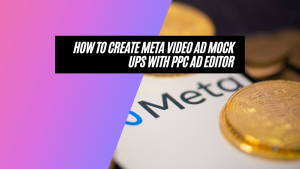Here Are Some Tips to Share Your Google Ads Campaign Build
Congrats! You put together a comprehensive keyword list for your client’s new paid search campaign. (Wait, not there yet? Make sure you read this article first on how to create a Google Ads Paid Search Brief with your clients first to save hours of work before you get started.) OK, let’s move on. You also have some kick-ass ads that will get searchers clicking all day and drive CTR and Quality Scores off the charts.
But, how do you present your Google Ads campaign build to your client for feedback and approval?
Presenting Google Ads to clients or even upper management can be a daunting task, but it doesn’t have to be.
In this article, we’ll present 3 different ways you can present your Google Ads campaign build (ad copy, keywords, campaign structure, etc) for review from screenshots, mockups using excel, and of course, PPC Ad Editor.
1) Taking a Screenshot
With this option, you take a screenshot of your ads and keywords directly from the Google Ads UI. If you already have an existing campaign and ad group and just want to spice things up a bit, this could be the fastest way. All you have to do is make a copy of an existing ad, make the updates to the headlines and descriptions, and use a screenshot tool (list of screenshot tools here) and send it off for feedback/approval.
However, you don’t want to save it in Google Ads because it will create it for you in the UI. This could be messy if you have multiple ads that are paused and it will be hard to keep track of what was approved or not.
The bad news is that if your client does have any edits, you will have to go back into Google Ads again to recreate the ads.
2) Using a spreadsheet program like Google Sheets or Excel

This is probably the most popular approach which many agencies today are doing. You can present your ads in a spreadsheet format to present all ad groups, headlines, and ad descriptions, ad extensions, and keywords for approval/feedback. Most clients understand how excel works and they can easily add comments or edit the ads directly in the document.
In addition, the advantage is being able to use all of the formulas to quickly edit any part of your campaign.
However, this approach could be too text-heavy and if your client is not aware of what an expanded text ad or a responsive search ad looks like on a SERP, this could confuse them even more. Sure, you can stylize it to look like a real ad, but this could take hours of work.
Also, you will need to email files back and forth until you have the approved final version in which you will still need to transfer to Google Ads either by cutting and pasting or…..(yep that’s the only way LOL). Now you have to spend more time making sure copied everything correctly.
3) Use a Google ads preview tool like PPC Ad Editor

This is by far the most efficient way to present your Google Ads campaign build.
With PPC Ad Editor, you can quickly create ads that look like they are created in the UI. You don’t have to worry about formatting or text-heavy spreadsheets since it’s already done for you (after all, this is how real ads are created in Google Ads). You can present these ads to your client and easily edit the headlines, descriptions, ad extensions, or keywords directly within PPC Ad Editor.
Once your campaign build is created, you can share the document with a unique link. As a bonus, your client can add feedback directly in the document (think Google sheets) and or edit the ads and keywords themselves.
Gone are the days of emailing files back and forth and retracing comments.
PPC Ad Editor allows multiple ways to create your campaign.
1) Import a Google Ads Editor CSV (This is great for users that prefer to build out using Google’s own tool).
2) Download existing campaigns from an active Google Ads account to use as a template
3) Import an Excel bulk sheet
4) Building from ads from scratch using our Visual Ad Builder.
Finally, once your clients approve your ads, you can simply upload it directly to Google Ads (paid plan required) or you can export your campaign build in a friendly Google Ads Editor CSV format.
So now you have all of your options on how to present paid search campaign build for approval with clients.
I hope you like it and feel free to ask questions.
Thank You! 🙂
So now you have all of your options on how to present Google Ads campaign builds for review, feedback, and approval with clients. I hope this article was helpful and if there is anything else we can do to help just let us know. Thank You!
Which one will you choose? Let us know! Comment belo






